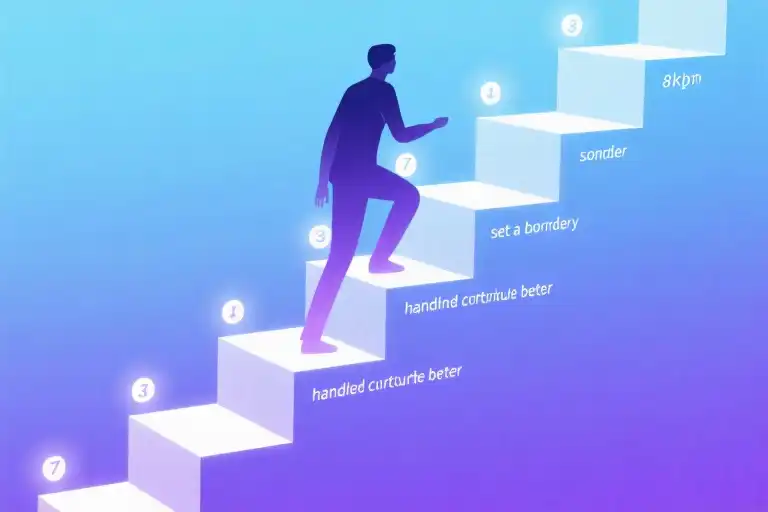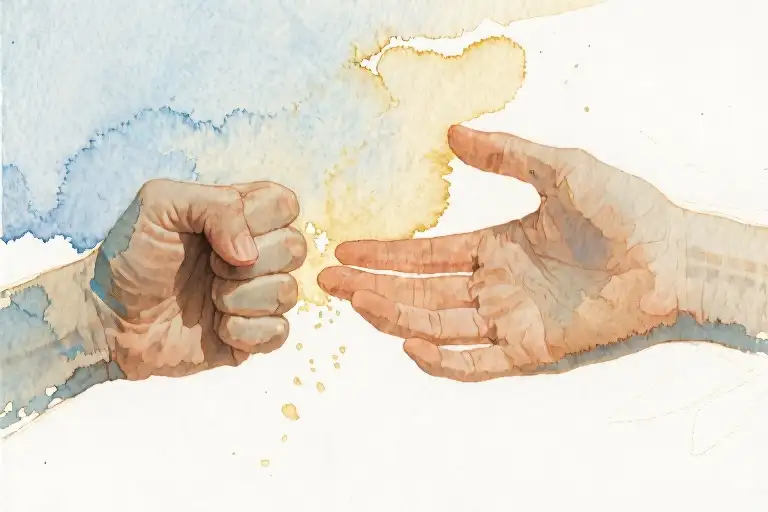Casey Neistat’s daily routine video hit like a cultural shockwave – 14 hours of work, 4 hours of sleep, every minute accounted for. The YouTube creator’s hyper-optimized schedule became aspirational content for millions, including philosophy student Stephan Joppich who immediately adopted a “No Wasted Time” regime. What followed wasn’t the expected productivity breakthrough but something far more human: complete burnout.
Joppich’s experience mirrors our collective unease with modern productivity culture. We’ve internalized the belief that time must be converted into measurable output, that idle moments represent personal failure. His initial reaction – to systematize every waking second – reflects how deeply we’ve absorbed this toxic efficiency mythology. Yet his eventual realization reveals the paradox: the moments he cherished most were precisely those our culture labels “wasteful” – park bench sitting, forest wandering, meadow lying.
This tension between societal expectations and human needs forms our contemporary malaise. We chase optimized schedules while secretly craving permission to simply exist. The video that triggered Joppich’s crisis represents more than one creator’s routine – it’s the embodiment of our collective productivity anxiety, the unattainable standard against which we measure our perceived shortcomings.
What makes this particularly modern is how digital platforms amplify these pressures. Social media transforms personal routines into performative content, making extreme schedules appear normative. We compare our behind-the-scenes with others’ highlight reels, forgetting that even Neistat’s grueling routine was edited for public consumption. The result is a generation suffering from what psychologist Robert Levine calls “time sickness” – the chronic feeling that time is slipping away unproductively.
Joppich’s story matters because it exposes the lie at productivity culture’s core: that maximizing every moment leads to fulfillment. His experiment proved the opposite – that relentless optimization drains meaning rather than creates it. The park bench moments he initially dismissed as wasteful became his only experiences of genuine peace, suggesting we’ve fundamentally misunderstood what makes time valuable.
This introduction sets the stage for examining why “wasted” time isn’t just enjoyable but necessary. Like Buddhist monks creating intricate sand mandalas only to destroy them, we might discover that life’s beauty lies in moments that serve no obvious purpose, that resist quantification, that exist simply because they make us feel alive.
The Productivity Trap
Stephan Joppich’s story begins like so many of ours do—with a YouTube video that promised the secret to extraordinary achievement. When he watched Casey Neistat detail his punishing daily routine—14 hours of work, 4 hours of sleep, every minute accounted for—something snapped into place. Here was proof that relentless optimization worked. The algorithm had delivered exactly what he’d been conditioned to seek: permission to grind harder.
What followed was a modern parable of good intentions gone awry. Joppich launched his “No Wasted Time” initiative with the fervor of a convert. He tracked minutes like Wall Street tracks quarterly earnings, treating seconds as perishable commodities. The initial rush of accomplishment gave way to something unexpected—a hollow exhaustion that no productivity hack could remedy.
This isn’t just one philosophy student’s crisis. Our devices ping with reminders to “make every moment count,” while corporate wellness programs preach “mindful productivity” as if awareness were just another efficiency tool. We’ve internalized the lie that self-worth correlates directly with output, creating what psychologist Robert Kegan calls “the mental demands of modern life”—expectations our brains didn’t evolve to handle.
Joppich’s breakthrough came when he noticed a paradox: his rare moments of peace occurred precisely when he wasn’t trying to achieve anything. Not during color-coded calendar blocks, but in the unplanned intervals—watching sunlight filter through leaves, feeling grass beneath bare feet. These weren’t lapses in discipline; they were glimpses of an alternative way to exist.
The cruelty of productivity culture isn’t just its impossible standards, but how it pathologizes basic human needs. We’ve medicalized daydreaming as “attention deficit,” rebranded rest as “recovery time,” and turned leisure into “personal development.” When Joppich found himself guilt-ridden for taking an unoptimized walk, he realized the system wasn’t broken—he was being gaslit by a worldview that treats people like machines.
His story exposes the dirty secret of hustle porn: peak efficiency often leads directly to burnout. Studies from the World Health Organization now classify occupational burnout as a syndrome, with key symptoms including “feelings of energy depletion” and “increased mental distance from one’s job.” The very behaviors we’re told will make us successful are quite literally making us sick.
Perhaps the most subversive revelation lies in Joppich’s description of those “wasted” moments—the park bench, the forest walk, the meadow. These weren’t escapes from reality, but returns to it. In a world that monetizes our attention, doing nothing becomes a radical act of reclamation. The trap isn’t that we’re unproductive; it’s that we’ve forgotten how to be human.
The Philosophy and Science of Aimless Time
Stephan Joppich’s failed productivity experiment reveals an uncomfortable truth we’ve collectively ignored: our obsession with measurable outcomes might be destroying our capacity for joy. The Buddhist practice of sand mandalas offers a radical alternative perspective. Monks spend days creating intricate patterns from colored sand, only to ceremonially destroy their work upon completion. There’s no museum exhibit, no auction record, no Instagram post documenting their achievement – just the quiet satisfaction of the act itself.
This ancient ritual mirrors what cognitive scientists now call the “default mode network” – those precious mental states when our brains aren’t focused on specific tasks. Recent neuroscience research from the University of Southern California shows these supposedly “unproductive” moments activate neural pathways associated with creativity and emotional processing. When we stare out windows or wander without destination, we’re not wasting time but engaging in what psychologists term “constructive internal reflection.”
The contradiction between cultural values and biological needs creates what philosopher Byung-Chul Han calls “the burnout society.” We’ve internalized the notion that every waking moment must contribute to some quantifiable output, yet our minds rebel against this constant pressure. Those park bench moments Joppich described – where time stretches without agenda – aren’t escapes from reality but returns to our natural cognitive rhythm.
Jenny Odell’s observations about birdwatching take on new significance here. When we focus on identifying a sparrow’s markings or tracking its flight path, we’re not just looking at birds but practicing what medieval monks called otium sanctum – holy idleness. This deliberate attention to the purposeless trains what attention economists try to commodify: our ability to simply be present.
The sand mandala’s destruction holds its deepest lesson. In sweeping away their painstaking work, the monks demonstrate that meaning exists in the making, not the made. Our contemporary struggle comes from demanding permanent products from transient processes. Perhaps true mental health lies not in better productivity systems, but in reclaiming our right to activities that exist outside capitalism’s measurement – those fragile, fleeting moments when we’re human beings rather than human doings.
The Gentle Art of Wasting Time Well
Stephan Joppich’s failed productivity experiment reveals a quiet truth we’ve forgotten: sometimes the most radical act is sitting still. After abandoning his “No Wasted Time” regimen, he discovered peace not in checked-off to-do lists but in park benches and aimless forest walks. This isn’t laziness—it’s reclaiming our humanity from the cult of optimization.
Three Subversive Practices
Birdwatching as Resistance
Jenny Odell wasn’t being metaphorical when she suggested observing sparrows could dismantle capitalism. There’s neuroscience behind it: focusing on erratic flight patterns engages our diffuse attention network, the same mental state that sparks creative breakthroughs. Try it tomorrow morning—stand by any window for seven minutes tracking pigeons. Notice how your shoulders drop when you stop assigning purpose to their movements.
The Forgotten Skill of Deep Listening
Most conversations today resemble WiFi signals—intermittent connections with frequent dropouts. Counter this by practicing what sound engineers call “wide listening”: next coffee chat, mute your inner monologue and absorb not just words but the spaces between them. The barista’s espresso machine symphony, your friend’s pen tapping rhythm—these “distractions” become anchors to the present moment.
Walking Meetings That Actually Work
The “walking brainstorm” cliché fails because we still treat it as productivity theater. Here’s the alternative: schedule 25-minute outdoor meetings with one rule—no solutions allowed. Wander without destinations while discussing problems. The cadence of footsteps alters thought patterns; you’ll often find answers arriving hours later in the shower, precisely because you weren’t trying to force them.
Micro-Rebellions for the Chronically Busy
The modern workplace operates on stolen time—here’s how to reclaim fragments:
- The 4:55pm Rule: Intentionally leave one easy task unfinished each day. Let it roll over. This small act dismantles the illusion of completion our brains crave.
- Scroll-Free Transit: Turn commute time into a “mental compost” period by staring out windows instead of at screens. Those unprocessed thoughts need breathing room.
- Meeting Chair Yoga: When trapped in endless Zoom calls, occasionally place both feet flat on floor and focus solely on that connection. It’s a three-second meditation masked as posture correction.
What makes these practices radical isn’t their complexity but their defiance of a core capitalist lie—that unused potential equals waste. Like Buddhist monks creating intricate sand mandalas only to sweep them away, we’re relearning that some things must be done precisely because they serve no purpose. The park bench, the bird’s flight path, the intentionally unfinished task—these are the quiet victories in our silent war against the quantification of every moment.
Reclaiming Attention in the Age of Distraction
The modern attention economy operates like a sophisticated casino – every notification, every infinite scroll, every autoplaying video carefully engineered to keep us plugged in. Our mental autonomy has quietly become the most commodified resource of the digital age. Jenny Odell’s radical proposition in How to Do Nothing isn’t about disconnecting completely, but about changing what we connect to.
Social media platforms have perfected the art of attention extraction through intermittent variable rewards – the same psychological mechanism that makes slot machines addictive. We swipe downward hoping for that dopamine hit of validation, while our capacity for sustained focus erodes like sand through fingers. The tragic irony? We voluntarily surrender what Buddhist monks spend years cultivating through meditation: the freedom to direct our awareness.
Odell suggests rebuilding our ‘attention muscles’ through practices that seem suspiciously unproductive in capitalist terms. Birdwatching trains us to observe subtle movements in peripheral vision. Deep listening requires surrendering the urge to formulate responses while others speak. Walking labyrinths – those ancient circular paths – teaches that the journey itself holds meaning beyond reaching a center point. These activities share a common thread: they can’t be optimized, monetized, or turned into personal brand content.
The battle for our attention manifests in subtle daily choices. That compulsion to check emails during a child’s recital. The phantom phone vibrations we feel in our pockets during conversations. The way we mentally draft Instagram captions while watching sunsets. Each micro-surrender reinforces what philosopher Byung-Chul Han calls the ‘achievement-subject’ – a human reduced to bundles of productivity metrics.
Resistance begins with small acts of reclamation. Try reading a book without highlighting ‘useful’ passages. Sit through an entire meal without documenting it. Walk somewhere without turning it into a quantified health metric. These become revolutionary acts in a system that profits from our fragmented awareness. As Odell observes, ‘To do nothing is to hold yourself still so that you can perceive what is actually there.’
The ultimate paradox emerges: what society labels ‘wasted time’ often becomes the fertile ground where creativity and self-knowledge take root. Those unstructured moments – staring at clouds, doodling absently, letting thoughts meander – are where the default mode network activates its magic. Neuroscience confirms what poets always knew: the idle mind isn’t idle at all.
Perhaps the most subversive question we can ask in productivity-obsessed cultures is simply: What if I don’t want to be stimulated right now? The answer might lead us back to something resembling a human pace of being – where attention becomes a gift we give rather than a resource we exploit.
The Art of Wasting Time Well
There’s a quiet rebellion brewing in park benches and forest trails, in the deliberate pauses between tasks where nothing measurable is achieved. Stephan Joppich’s journey from productivity zealot to purposelessness advocate mirrors our collective exhaustion with the cult of busyness. His realization—that peace arrived not during scheduled productivity blocks but in unscripted moments of simply being—challenges everything we’ve been taught about time’s value.
Buddhist monks understand this paradox intimately. Their intricate sand mandalas, labored over for days only to be swept away, embody the profound truth that some of life’s most meaningful acts carry no practical outcome. The colored grains aren’t meant to be framed or sold; their worth exists in the meditative process of creation and the spiritual practice of release. Similarly, our wasted minutes—the coffee sipped without multitasking, the clouds watched without photography—contain their own sacred geometry.
Jenny Odell’s manifesto against the attention economy reveals how capitalist structures have commodified even our leisure. What we dismiss as wasted time often represents the last frontiers of mental autonomy, spaces where we’re neither consumers nor content creators. Her advocacy for birdwatching and deep listening isn’t merely about relaxation—it’s guerrilla warfare against systems designed to monetize every waking thought.
Today, consider this radical assignment: steal ten minutes. Not for meditation with a tracked timer, not for a ‘brain-boosting’ walk with a step counter, but for pure existential loitering. Sit where you can watch light shift across surfaces, or trace the path of a single ant. Notice how your shoulders drop when no outcome is expected, how your breathing syncs with the world’s rhythm rather than your calendar alerts.
Like mandala sand returning to the earth, these moments will leave no measurable trace. Their gift isn’t in what they produce, but in what they dissolve—the illusion that our worth correlates with output. The most subversive act may be to protect these empty spaces fiercely, treating them not as stolen time but as the rightful core of being human.





